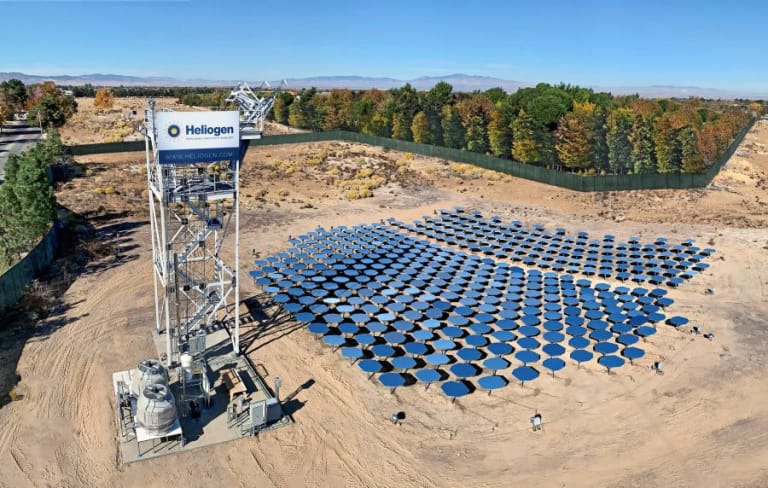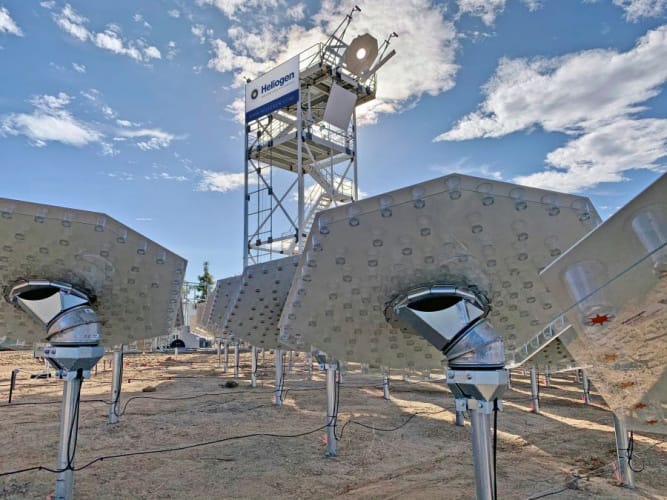
Heliogen uses advanced computer vision software to align a large array of mirrors with extreme precision in order to reflect sunlight to a single target. The California-based company claims it has already used this technology to exceed temperatures greater than 1,000 degrees Celsius, which is hot enough to replace fossil fuels in the production of steel and cement. At temperatures of 1,500°C, water and CO2 can be split to make fossil-free fuels such as hydrogen and syngas.
UK project aims for combined PV and solar thermal system
South Australia to build 150MW solar thermal plant
Previous solar thermal systems have been designed to reach temperatures of up to only 565 degrees Celsius. While this is sufficient for generating electricity, industrial processes require much higher temperatures, and the bulk of global energy demand is detached from electricity in sectors such as transport and industrial activity.
“We’ve made great strides in deploying clean energy in our electricity system,” said Bill Gross, founder and CEO of Heliogen. “But electricity accounts for less than a quarter of global energy demand. Heliogen represents a technological leap forward in addressing the other 75 per cent of energy demand: the use of fossil fuels for industrial processes and transportation. With low-cost, ultra-high temperature process heat, we have an opportunity to make meaningful contributions to solving the climate crisis.”

Alongside Microsoft’s Gates, investors in Heliogen include venture capital firm Neotribe and Dr Patrick Soon-Shiong, a Los Angeles-based investor and entrepreneur. Neotribe’s founder and managing director, Swaroop ‘Kittu’ Kolluri, and Dr Soon-Shiong have joined Heliogen’s board of directors.
“Today, industrial processes like those used to make cement, steel, and other materials are responsible for more than a fifth of all emissions,” said Gates. “These materials are everywhere in our lives but we don’t have any proven breakthroughs that will give us affordable, zero-carbon versions of them.
“If we’re going to get to zero-carbon emissions overall, we have a lot of inventing to do. I’m pleased to have been an early backer of Bill Gross’s novel solar concentration technology. Its capacity to achieve the high temperatures required for these processes is a promising development in the quest to one day replace fossil fuel.”










McMurtry Spéirling defies gravity using fan downforce
What a fun demonstration. I wonder if they were brave enough to be in the car when it was first turned over. Racing fan cars would be an interesting...